Invented by Eric S. Edwards, Evan T. Edwards, Mark J. Licata, Paul F. Meyers, Streamline Studio Inc (f/k/a Ebap Inc D/b/a Streamline Design), kaleo Inc
The devices and systems for locating and interfacing with medication delivery systems include a wide range of products such as smart inhalers, smart pill bottles, and medication management apps. These products are designed to help patients manage their medication schedules, track their medication usage, and monitor their health conditions.
Smart inhalers are one of the most popular devices in this market. These inhalers are equipped with sensors that track the usage of the inhaler and provide feedback to the patient. This feedback can help patients understand how to use the inhaler correctly and improve their medication adherence.
Smart pill bottles are another popular product in this market. These bottles are equipped with sensors that track the usage of the medication and provide reminders to the patient when it is time to take their medication. Some smart pill bottles also have features that allow patients to track their medication usage and share this information with their healthcare providers.
Medication management apps are also becoming increasingly popular. These apps allow patients to track their medication usage, set reminders for when to take their medication, and monitor their health conditions. Some medication management apps also have features that allow patients to communicate with their healthcare providers and receive personalized recommendations for their medication schedules.
The market for devices and systems for locating and interfacing with medication delivery systems is driven by several factors. The increasing prevalence of chronic diseases, the growing demand for personalized healthcare, and the need for efficient and effective medication delivery systems are some of the key drivers of this market.
In conclusion, the market for devices and systems for locating and interfacing with medication delivery systems is expected to grow rapidly in the coming years. With the increasing demand for personalized healthcare, these products are becoming more important than ever before. Smart inhalers, smart pill bottles, and medication management apps are just a few of the products that are driving this market forward. As technology continues to advance, we can expect to see even more innovative products in this market in the future.
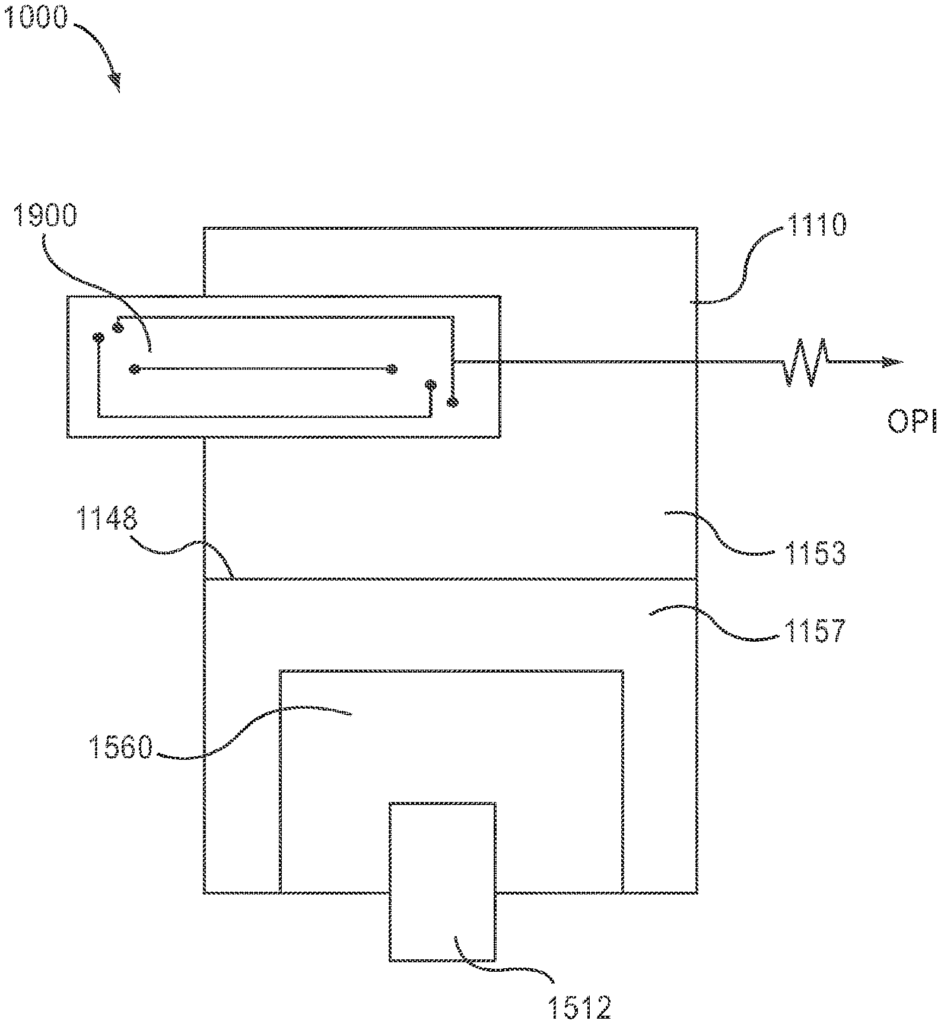
The Streamline Studio Inc (f/k/a Ebap Inc D/b/a Streamline Design), kaleo Inc invention works as follows
In some embodiments a method comprises establishing a communication link between a computing system and an adapter. The adapter can receive at least part of a medication delivery device. To maintain the communication link, a wireless signal is received. The relative position of the computing device with respect to the adapter can be determined. When the wireless signal has not been received in a certain time, an alarm is generated. The alarm is based upon the relative distance between the computing device, and the adapter.
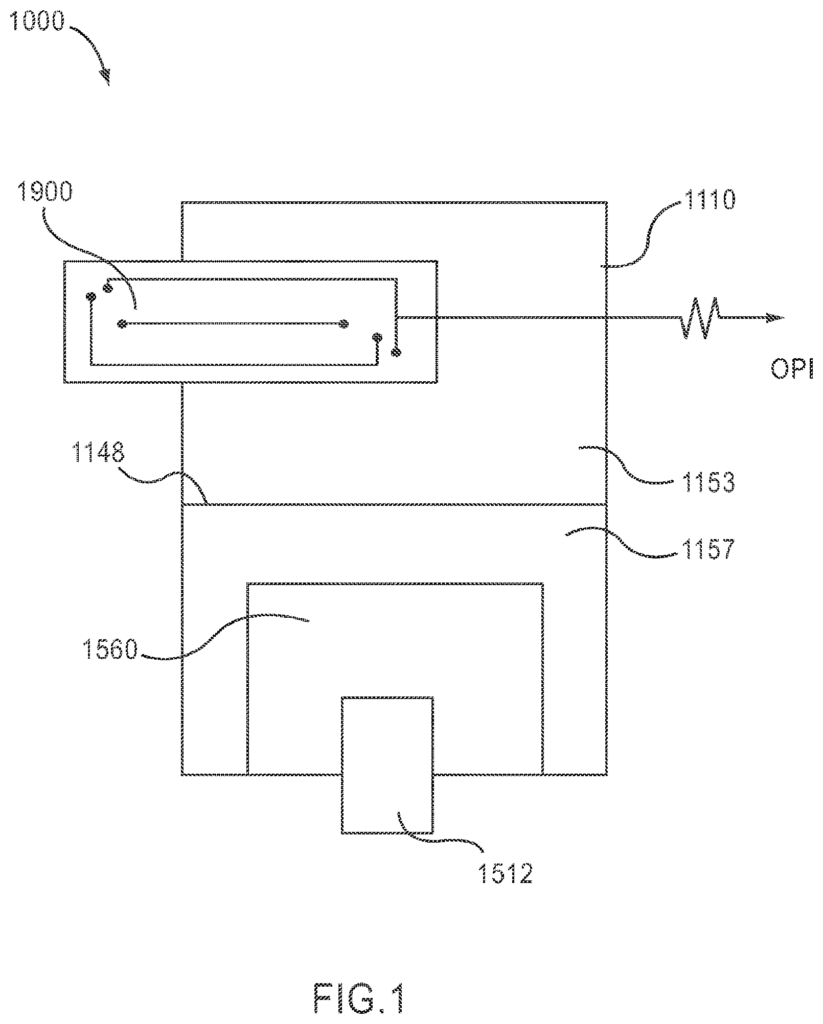
Background for Devices and systems for locating and interfacing with medication delivery systems
The invention is a medical device and, more specifically, a drug delivery device and/or an simulated medication delivery device with a location feature. It also includes devices that interact with these medicament delivery devices or simulated medicine delivery devices.
Exposure to substances such as peanuts, bee venom or shellfish can trigger allergic reactions. These allergic reactions may lead to anaphylactic syndrome, which is characterized by a rapid drop in blood pressure and hives. In order to prevent serious injury or death, it is important to act quickly in order mitigate the effects of such exposures. In certain situations, for example, an injection with epinephrine can be used to provide complete or substantial relief from the allergic response. In some situations, such as in the case of an exposure to a toxin, an injection with an antidote can reduce or eliminate the potential harm. Some people carry an auto-injector or other medication delivery device to self-administer medications in the event of an allergic reaction.
As an example, naloxone can be used to prevent and/or reverse the effects of opioids. Naloxone formulations are used to treat respiratory depression, among other symptoms of opioid toxicity. As an example, known naloxone formulations can be used in order to reverse or mitigate the effects from an opioid overdose, such as heroin. In these situations, the formulation of naloxone should be delivered quickly in a way that produces a rapid onset. In order to deliver naloxone via intranasal or injection, users must perform a number of procedures that can reduce the effectiveness of naloxone if they are not performed correctly. Because naloxone can be administered in an emergency, even trained and experienced users are susceptible to confusion or panic. This compromises the delivery of naloxone.
As an example, glucagon can be used to treat hypoglycemia. Hypoglycemia may cause a patient to lose their motor coordination or consciousness in certain circumstances. In an emergency, the care provider will often administer glucagon.
In the examples above, as well as in other cases, the person requiring the injection could be incapacitated, and unable to tell bystanders about the nature of the emergency, or that a medication delivery device is readily available. Bystanders who are unaware of the location and availability of the device or who are unable administer the medication may miss out on important medical assistance. To activate some known medicament devices, the user might be required to perform a number of actions. To actuate certain auto-injectors the user may have to remove the protective cap, remove the locking device, position the auto injector against the body in the correct location and press the button to activate the auto-injector. Incomplete injections and/or injections into unwanted locations of the body can occur if these steps are not completed correctly. “In some cases, users who are confused about the use of auto-injectors may have accidentally injected the medication into their thumb because they have incorrectly positioned the auto-injector.
The likelihood of misuse of known drug delivery devices is increased by the type of user or the circumstances in which they are used. Many users, for example, are not medical professionals or have never received training in operating such devices. In some situations, users may not have been the primary caregiver or patient and therefore may not have any experience with the device. Even users who are familiar with a device or have been trained to use it may not be able to operate it well because they only use the device in rare cases, such as in the case of an allergic reaction. Finaly, these devices are used in emergency situations, when even trained and experienced users can be affected by confusion, panic and/or physiological effects.
Some known devices for delivering medicaments include printed instructions that inform the user about the steps necessary to deliver the medication correctly. These printed instructions can, however, be insufficient for the users or situations described above. “Because some medicament delivery devices are compact (auto-injectors or pen injectors), such printed instructions can be difficult to read in an emergency.
Some known drug delivery devices are associated to simulated drugs delivery devices (e.g.?trainers?) To provide a way for users to practice the use of the device without having to be exposed to the needles and/or the medication that are typically found in it. These simulated delivery devices can, however, also have inadequate instructions for use, as described above.
Monitoring the patient’s compliance to known medication delivery devices can be problematic. Some known treatment regimens require multiple doses of a medication to be administered timely and/or in an orderly fashion in order to achieve effectiveness (e.g. certain vaccination regimens). Monitoring the patient’s compliance with the treatment is important to ensure that it will be effective. Some of the known systems for delivering medicaments include both a delivery device as well as an electronic system that helps the user to maintain a log or set the correct dosage. These known medicament delivery devices and their accompanying electronic systems are often large and difficult to carry. These known medicament delivery systems, and their accompanying electronic devices, can be difficult to use or expensive to manufacture. Some known systems for medicament delivery include sensors that are positioned within the path of the medication, which may interfere with delivery, cause contamination or the like.
There is a need for devices and/or systems that enable a medication delivery device to quickly be identified and located. They also provide easy-to-understand instructions in any situation. A need also exists for simulated delivery systems or devices that provide instructions and can be reused many times. “There is also a requirement for medicament delivery devices and/or systems that provide information on compliance with the use and/or can communicate electronically with another communication device.
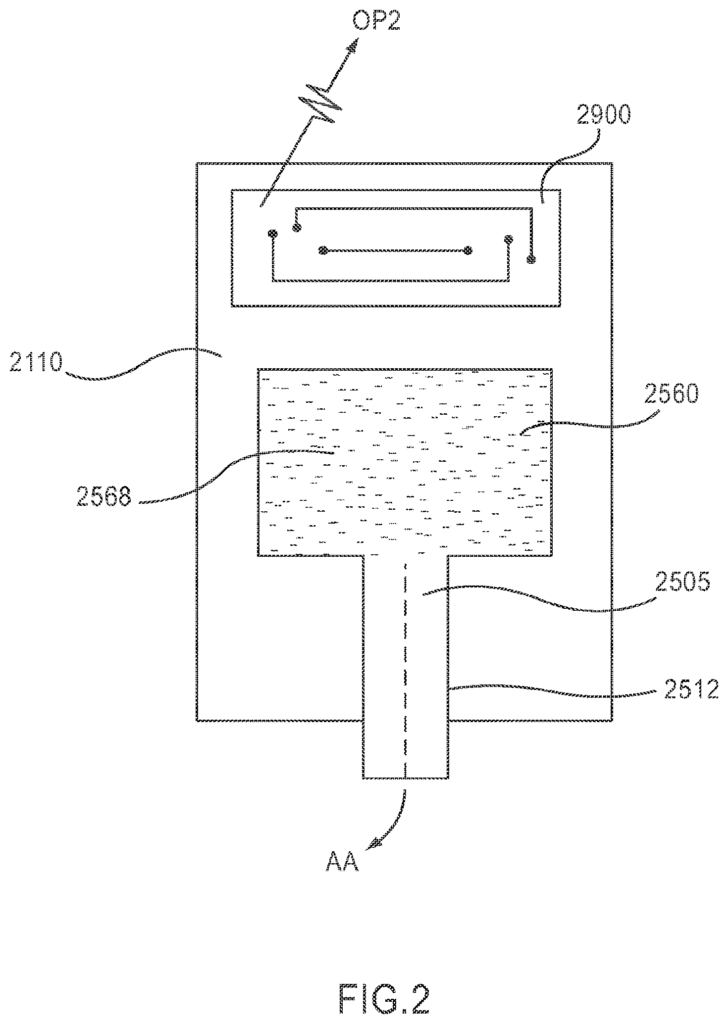
Herein are described “Systems and methods for facilitating wireless communications with drug delivery devices and simulated drugs delivery devices.” In certain embodiments, the method comprises establishing a communication link between a computing system and an adapter. The adapter can receive a portion or all of a medication delivery device. To maintain the communication link, a wireless signal is received. The relative position of the adapter and computing device is determined. When the wireless signal has not been received in a certain time, an alarm is generated. The alarm is based upon the relative distance between the computing device, and the adapter.
This application is related to U.S. Pat. No. No. 8,172,082, entitled “Devices, Systems, and Methods for the Delivery of Medicament”,? Filed Feb. 5, 2007 and U.S. Pat. No. No. 8,231,573, entitled “Medicament delivery device having an electronic circuit system,? “Applications filed on May 12, 2008 are hereby incorporated by reference in their entirety.
The medicament delivery system shown and described can be used with any suitable medication delivery device or medicament container so that the device can be easily identified, located and accessed as described. In some embodiments the medical injector can be a pen-injector, prefilled syringes, auto-injectors or the like.
As an example, FIG. According to one embodiment of the invention, FIG. 1 shows a schematic of a medical injection 1000. The medical injector includes a housing, a medication container, a delivery member, and an electronic system. The housing 1110 has a sidewall that defines two regions within the housing 1100. The sidewall 1148 isolates physically the first region from the second region. The sidewall 1148 has no openings, so that the first region is fluidically or physically isolated from second region. Another way to say it is that the sidewall 1148 lies between the first area 1157 and the 2nd region 1153, separating the 1st region from the 2nd region. The first region 1157, and the second area 1153 in FIG. Although the first region and the second region are shown in FIG. The first region or the second region may be defined as cavities by the housing 1110, and/or sidewall 1148.
The medicament container, which may be, for instance, a cartridge, a syringe prefilled, a vial or ampule, or similar, is located within the first region of the housing 1 110. In the first region of the housing 1101, at least a portion is located. In certain configurations, the drug delivery member 1512 may be in fluid contact with the medication container 1560. The medicament delivery member can transport a medication from the medicament 1560 to an area outside of the housing 1110 in this way. The medicament delivery 1512 may include a needle or nozzle.
At the very least, a portion” of the electronic system 1900 is located within the second region of the housing 1 110. The portion of electronic circuit system is therefore disposed in the housing 1110 so that it is fluidically or physically isolated from the drug container 1560 or the medicament delivery member 15012.
The electronic system 1900 is configured for a electronic output OP1 that is associated with the use of the injector 1000. In some embodiments, for example, the electronic out put OP1 is associated with a medical injector 1000 instruction. In other embodiments the electronic output can be an instruction for post-use, such as a recorded message informing the user of the completion of the injection, instructing him on safety and disposal procedures after the injection, or instructing him to seek medical treatment following the injection, and/or similar. In other embodiments, electronic output OP1 is associated with patient compliance when using the medical injection 1000. For example, it can alert the user to the time of use, display the use of the injector or locate the injector. In some embodiments the electronic output can be linked to an actuation by the medical injector. “Or, to put it another way, electronic circuit system 1800 can be configured to produce the electronic output in response to the actuation by the medical injector 1,000.
The electronic output OP1 could be, for instance, a visual display such as a text message displayed on a screen, (not shown), or an LED. In some embodiments the electronic output can be audio, such as recorded speech, tones or the like. In other embodiments the electronic output can be a signal that is wirelessly transmitted to a remote device.
The medical injection 1000″ can be any medical injector that is suitable for injecting medication into the body of a person. The medical injector can be, for example, a pen injector or auto-injector. In certain embodiments, the injector can be used for chronic care. The medical injector can also be a reusable, multi-dose device. A medical injector 1000 with multiple doses can be used, for example, to deliver insulin or other medicaments to patients who require daily, weekly or monthly injections. In some embodiments, the injector 1000 is a one-time use device. The medical injector can be a single-dose device. In certain embodiments, the medical injector can contain the same dosage, which can be prescribed in a chronic care medicament regimen, a clinical trial or the like. Medical injector 1000 may include multiple dosages or different medicament compositions in other embodiments.
The sidewall 1148 could be any structure that is suitable to separate the first region 1157 of the housing 1110 and the second region 1153 of the housing 1100. In certain embodiments, sidewall 1148 may be rigid. In some embodiments, the 1148 sidewall can be a moving member, such as a piston. In other embodiments, sidewall 1148 may be a flexible component, such as a diaphragm. In certain embodiments, the material of the sidewall 1148 is transparent, allowing light to pass from the first 1157 region to the second 1153 region and vice versa. Transparent sidewalls can be used with optical sensors. The sidewall 1148 may be integrally formed into the housing 1110, or it can be separately formed from the housing.
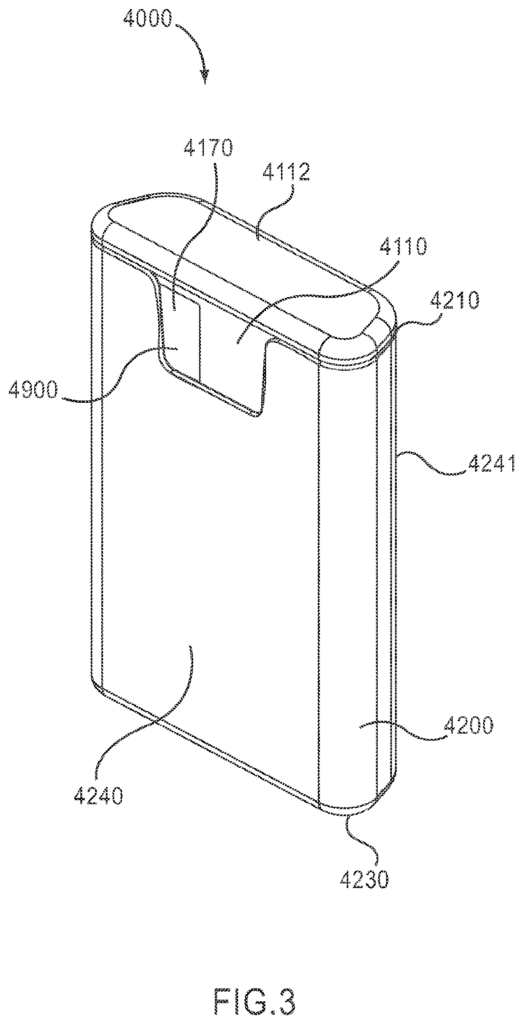
The electronic circuit system 1900 may include any electronic components that are operatively coupled in order to produce or output the electronic output, OP1, and/or perform the functions described. The electronic circuit system 1800 can be similar to electronic circuit systems described by U.S. Patent application Ser. No. No. Filed Jan. 9, 2007. This is incorporated by reference herein in its entirety.
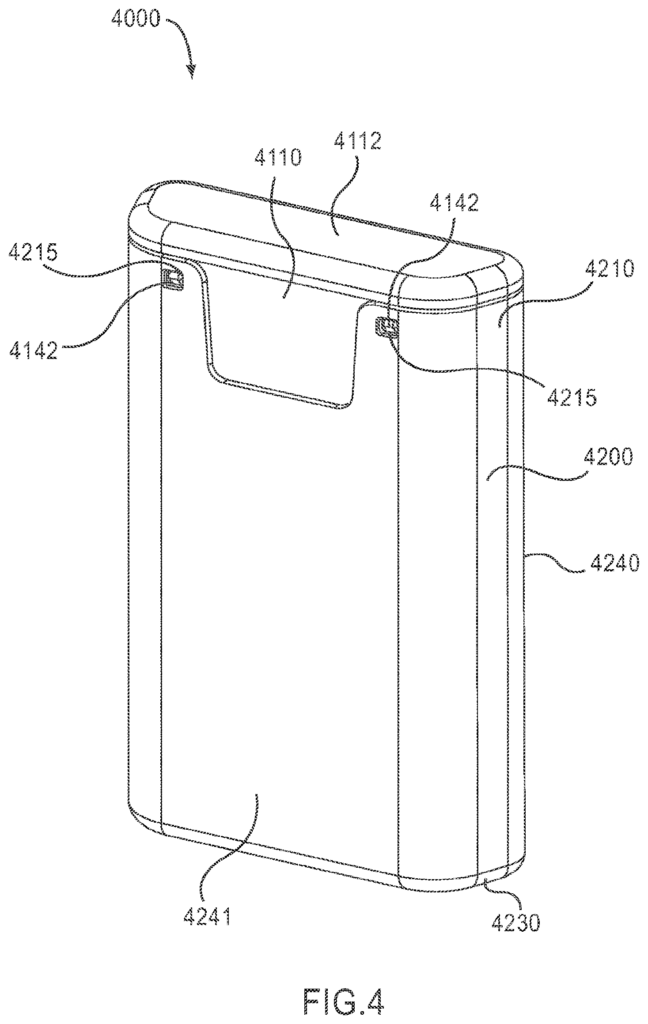
Click here to view the patent on Google Patents.
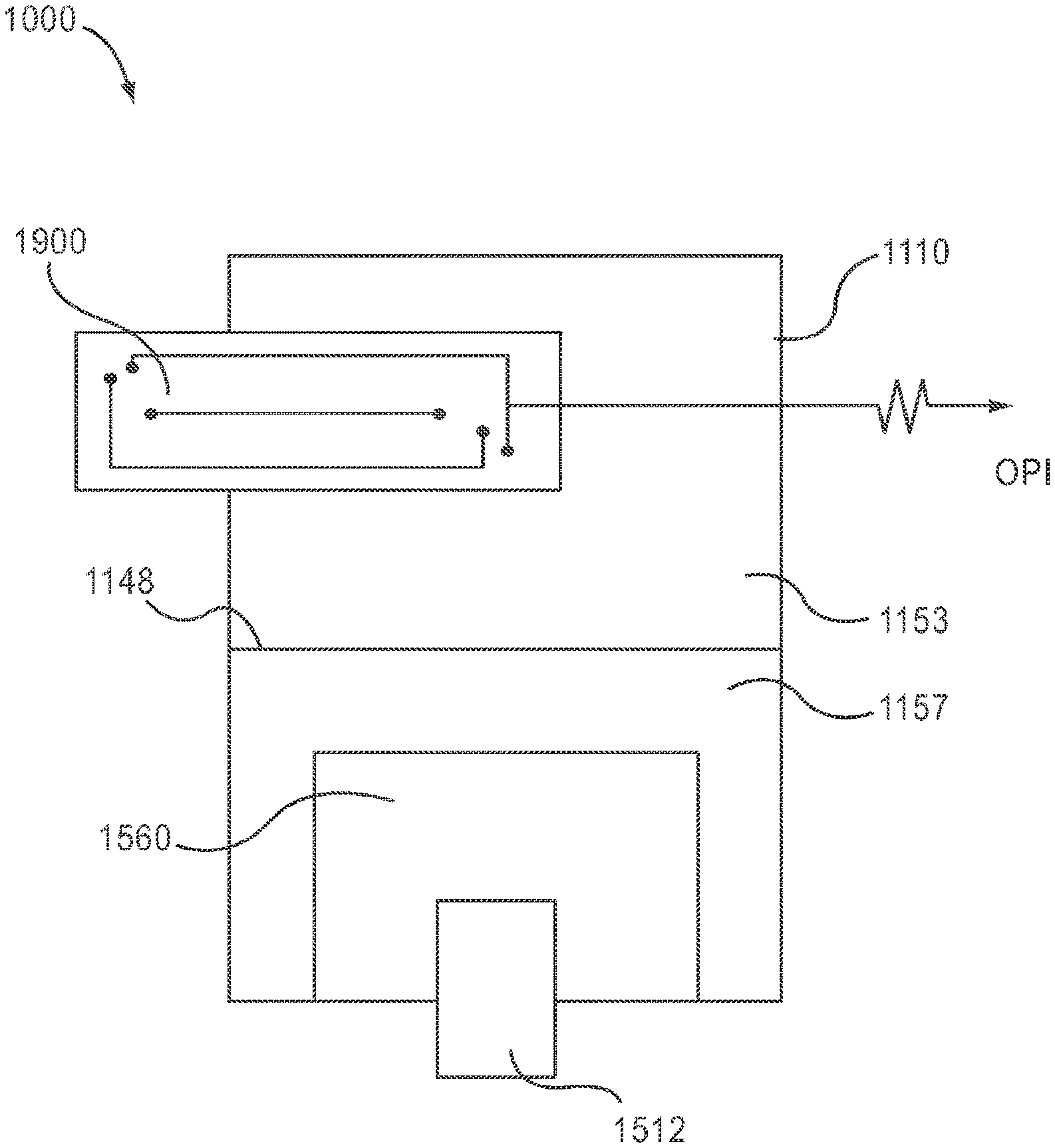
Leave a Reply